Composition and Structure of the Atmosphere
What do you see when you look at the sky? You might see clouds, blue sky, lightning, or even a haze of air pollution. All of these things are in the atmosphere, a layer of gases that surrounds Earth.
What’s in the air?
The atmosphere is mostly air, which is made of gas molecules. As shown in Figure 1, about four out of five molecules in the air are nitrogen gas (N2). About one molecule out of five is oxygen gas (O2).
There are also small amounts of other gases such as water vapor, argon (Ar) and carbon dioxide (CO2). Besides air, the atmosphere also contains tiny solid particles such as dust and pollen. Some of the particles in the atmosphere even come from volcanic eruptions.
1. Key Concept Check What is the composition of the atmosphere?
Figure 1 Air mostly is made of nitrogen and oxygen. There are also small amounts of other gases in the air.
Layers of the Atmosphere
The characteristics and composition of Earth’s atmosphere change with altitude. Molecules at the bottom of the atmosphere are packed together more closely than molecules higher in the atmosphere. This is because the weight of all the molecules above pushes down on the molecules at the bottom of the atmosphere. Air pressure is the pressure that a column of air exerts on the air, or the surface, below it. When molecules in the air are packed closely together, it has high pressure. When molecules in the air are more spread out, it has low pressure.
Scientists divide the atmosphere into layers that have distinct characteristics. You can see these layers in Figure 2. The troposphere (TRO puh sfihr) is the atmospheric layer closest to the Earth extending from Earth’s surface to about 10 km above it.
2. Key Concept Check What is the structure of the atmosphere?
Figure 2 Scientists divide the atmosphere into five layers that have special characteristics. In some layers, temperature increases with altitude, but temperature decreases in other layers.
 Visual Check Which layer contains the ozone layer?
Visual Check Which layer contains the ozone layer?
Moving Air
Air pressure in the troposphere is always changing because air in the troposphere is always moving. Changing air pressures create wind patterns and cause weather events.
The Importance of the Sun
The Sun warms the rocks, the soil, and the water at Earth’s surface. In turn, the Earth warms the air in the troposphere. Because warm air is less dense than cool air, it rises high in the troposphere. As the air moves higher, it cools. Denser, cooled air sinks. It flows toward the low-pressure area left by the rising warm air. The cooled air then warms and rises again. The circulation of rising, less dense, warm air and sinking, more dense, cool air is called convection. As illustrated in Figure 3, convection is responsible for the movement of air in the troposphere.
1. Key Concept Check What causes air to move ?
Figure 3 Cool air flows into a lower pressure area forcing the warmer air upward. After the air cools, it sinks toward Earth. As hot air rises, cool air replaces it.
Local Winds
Some winds blow over short distances. A local wind results from air flowing from an area of higher air pressure to an area of lower air pressure. Differences in pressure result when the atmosphere is warmer in one area than in another.
Global Winds
At Earth’s surface, atmospheric convection makes giant bands of winds, as shown in Figure 4. The westerlies generally blow from west to east, but Earth’s rotation causes them to turn away from the equator. The trade winds generally blow east to west, but Earth’s rotation causes them to turn toward the equator.
Figure 4 Earth’s rotation affects the direction of global winds. The westerlies blow from southwest to northeast in the northern hemisphere and from northwest to southeast in the southern hemisphere.
WORD ORIGIN
convection
from Latin convectionem, means “the act of carrying”
from Latin convectionem, means “the act of carrying”
Clouds
Have you ever driven up a mountain into a cloud? A cloud is a group of water droplets or ice crystals so small that they float in the air. Clouds are important because they transport water to different areas of Earth.
Cloud Formation
How does the water vapor that makes clouds get into the sky? Most of it gets there by evaporation. Then, through the process of condensation, water vapor turns into clouds.
Evaporation The process of a liquid, such as water, changing into a gas, such as water vapor, is called evaporation. Thermal energy, usually from sunlight, heats water and causes it to evaporate. Water evaporates from the surfaces of bodies of water, such as the ocean, lakes, and rivers and from organisms, such as trees and humans.
Condensation The process of water vapor gas changing into liquid water is condensation. Water vapor condenses around tiny particles of dust, pollen, or other air pollution. These water droplets are so small that they are able to float in the air. Many billions of these little water droplets make up a cloud. As more water condenses and the droplets increase in size, they can become so large that they fall from the sky as rain or snow.
1. Key Concept Check How do clouds form?
Types of Clouds
There are many types of clouds. Each type has a specific appearance and forms at a specific height in the troposphere. The three main cloud types are shown in Figure 5.
Cumulus Clouds Puffy clouds that look like cotton balls are called cumulus (KYEW myuh lus) clouds. The bases of these clouds are usually flat. Some cumulus clouds are small and low. Others grow taller and larger until they reach the top of the troposphere. These are the kind of clouds that make thunderstorms.
Stratus Clouds It might be hard for you to see individual stratus clouds or find the edges of them. They usually spread across most or all of the visible sky. Stratus clouds are low in the sky and can produce drizzle or light rain.
Cirrus Clouds High in the troposphere is where cirrus (SIHR us) clouds form. They are made of ice crystals that fan out in the wind and create long, wispy shapes. Cirrus clouds sometimes are called mare’s tails because they look like a horse’s tail. Cirrus clouds do not produce rain or snow.
2. Key Concept Check What are the three main types of clouds?
Figure 5 Cumulus, cirrus, and stratus clouds are recognizable by their different shapes. Can you find any of these cloud types in the sky today?
 Visual Check Which type of cloud looks like a horse’s tail?
Visual Check Which type of cloud looks like a horse’s tail?
Lesson Review
Visual Summary
The atmosphere is divided into five layers. The air in the atmosphere is mostly nitrogen and oxygen. The air also contains argon, carbon dioxide and water vapor.
Atmospheric convection in the troposphere makes bands of winds that blow worldwide.
There are three main types of clouds: cirrus, stratus, and cumulus.
Lesson Assessment
Use Vocabulary
1. The__________is
the atmospheric layer closest to Earth’s surface.
2. The force
exerted by air is called__________.
Understand Key
Concepts
3. Describe
how Earth’s rotation affects global winds.
4. Which cloud is
associated with thunderstorms?
A.cirrus
B.cumulus
C.easterlies
D.westerlies
5. Compare
the characteristics of the troposphere and the stratosphere.
6. Weather
happens in which layer of the atmosphere?
A.exosphere
B.mesosphere
C.stratosphere
D.troposphere
7. Local winds
blow from
A.an area of high pressure to an
area of low pressure.
B.an area of high pressure to
another area of high pressure.
C.an area of low pressure to an
area of high pressure.
D.an area of low pressure to
another area of low pressure.
8. Which type of
cloud is shown below?
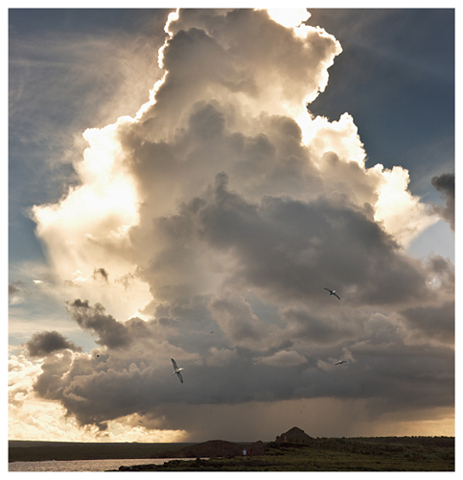

Steve Allen/Getty
Images
A.cirrus
B. cumulus
C. mare's tail
D.stratus
9. Which process
forms the droplets that make up clouds?
A.condensation
B.convection
C.deposition
D.evaporation
Interpret Graphics
10. Summarize
how temperature changes through the layers of the atmosphere using the table
below.
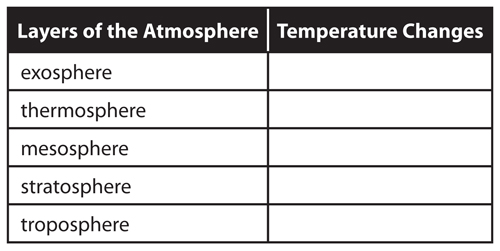

11. Describe
what causes air to flow in the pattern of convection shown here.
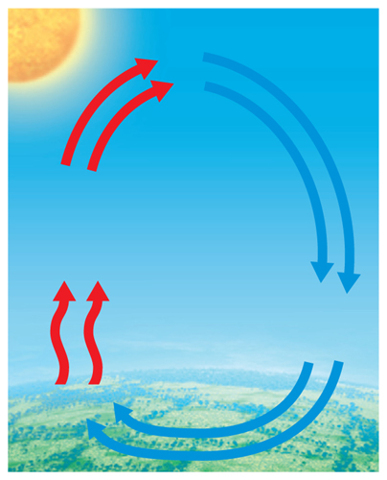

Critical Thinking
12. Decide
Where on Earth is the convection cycle the strongest?
13. Hypothesize
how an increase in air pollution might affect cloud formation.
14. Synthesize
How would holes in the ozone layer affect life on Earth?
15. Hypothesize
How would global winds be different if Earth did not rotate?
16. Infer Where do more clouds form—over a desert or over
the ocean?
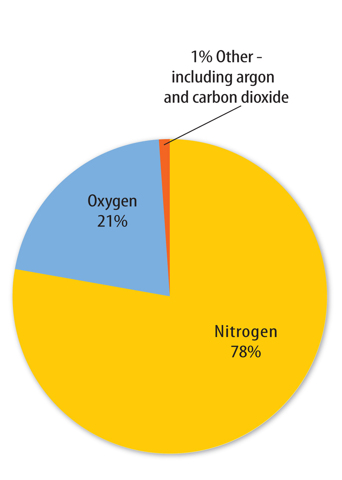
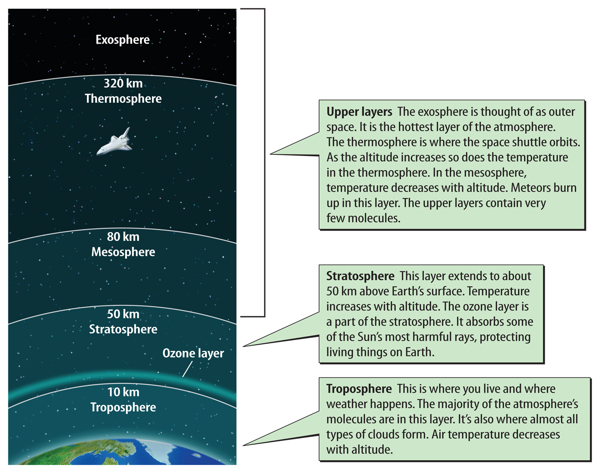



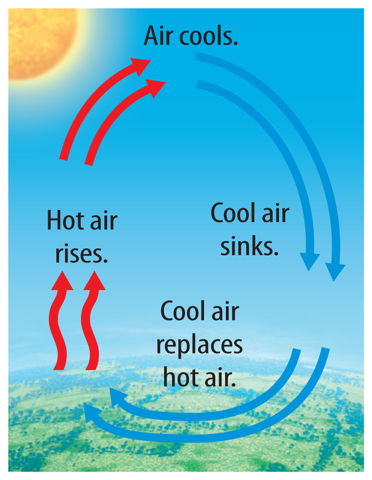
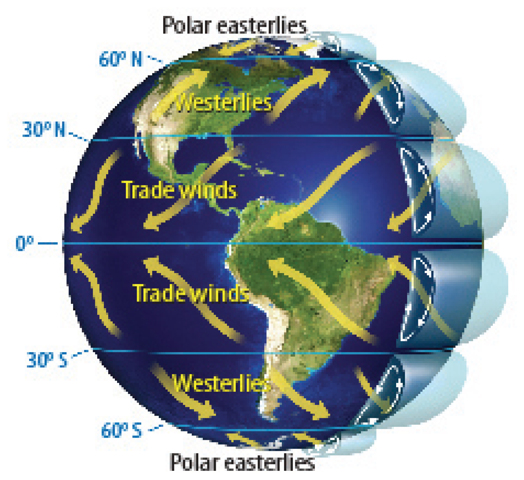
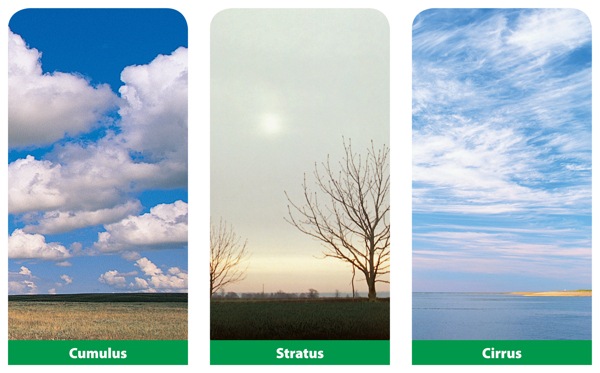
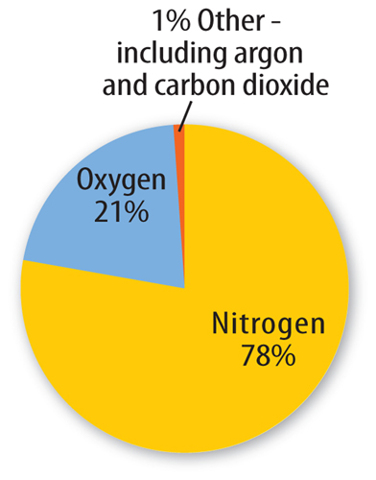
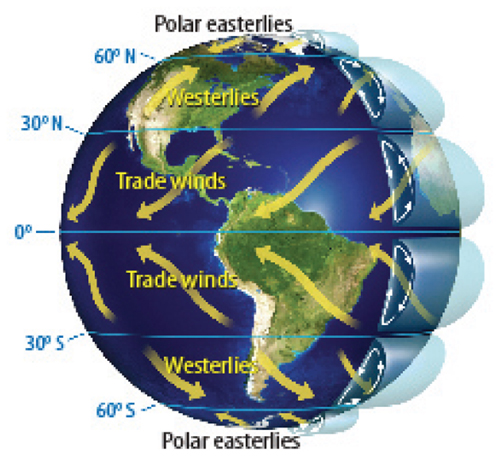
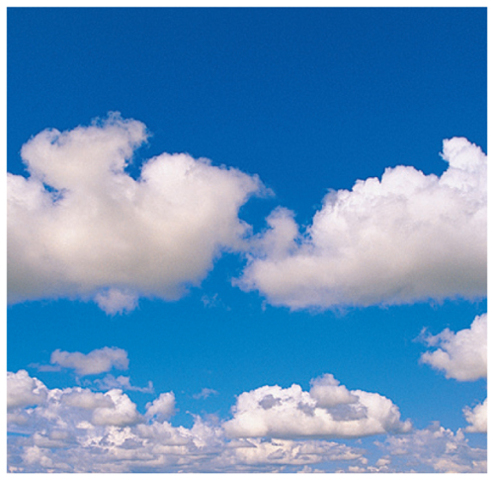
0 comments:
Post a Comment